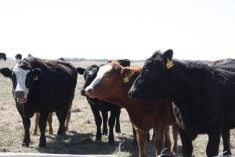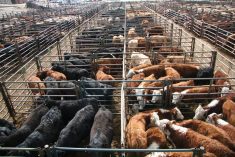Canadians are looking forward to some horse trading with the Chinese.
China is turning into an emerging horse market as the growing middle class obtains more disposable income and time to enjoy equestrian events.
Canada hopes to fill that gap by exporting live animals, genetics and expertise on training and horsemanship, says Susan Stewart, a consultant for Equine Canada.
“They are certainly in a financial position, and people have more leisure time, so they are able to participate in things they weren’t able to do before,” Stewart said.
Read Also

Canada told trade crisis solutions in its hands
Canadians and Canadian exporters need to accept that the old rules of trade are over, and open access to the U.S. market may also be over, says the chief financial correspondent for CTV News.
She is working with Equine Canada’s export market development program to brand the Canadian equine industry in international markets and help those already involved in offshore deals.
China has a long history with horses but didn’t develop its equestrian industry in the last 100 years.
Horse associations have started recently and interest has grown in recreational riding, Thoroughbred racing, endurance riding, barrel races and show jumping.
“In the last 10 years, they have improved their structure of their horse industry,” she said.
The country has an estimated six million horses, but they are not all suited for modern equestrian sports.
“Our goal is to have a larger relationship with China and to obviously help our horse industry in Canada get different markets,” Stewart said.
About 95 percent of Canadian horses are exported to the United States. She said this is a new opportunity, as long as Canadians handle it carefully and provide horses that are best suited to the Chinese.
“Export businesses in Canada are looking at diversifying their markets and emerging markets and have recognized the U.S. market is not what it was and it is not going to pick up at the same level for a number of years,” she said.
“For our industry to survive, we absolutely have to look outside our traditional market and emerging markets. The China market is at the beginning stages of developing their modern horse industry.”
Stewart plans to attend the China International Horse Fair in Shanghai next October.
According to the horse fair website, China imported 309 horses in 2005 and 2,750 in 2010. It has about 400 horse farms and 40,000 horse owners.
Weststar International of Surrey, B.C., shipped five Arabians, while 29 Quarterhorses were recently exported by air from Maryland.
Kevin and Terry Johnson of Weststar were approached when their customer saw their stallion on the company website.
“He wanted to bring halter horses and he wanted some beautiful horses,” said Terry Johnson, a trainer and judge who also runs clinics.
She selected 10 horses, but only five were selected after blood tests and other examinations because China has strict health protocols.
“They are very, very stringent.” The same customer has also imported Quarterhorses and Andalusians to his equestrian centre near Beijing.
“They are looking for American type horses,” she said.
Horses in China’s history
•Horses and chariots were entombed with their owners during the Shang dynasty, which was from 1600 to 1100 BC
•From 1100 to 771 BC, during the Western Zhou dynasty, horses were keys to controlling the empire and trade
•Between 206 and 220 AD, Han dynasty rulers began importing horses from the West
•During the Tang dynasty, 618 to 907 breeding practices began to refine Chinese horses and they began to al import Arab and Turkish horses
•Early Chinese mythology associated the horse with the dragon and was thought to fly
•Chinese invented one of the earliest effective harness systems based on a horse collar, breast strap and stirrups, which allowed improved handling
•Today, more than 26 breeds of horses exist in China
Staff research















